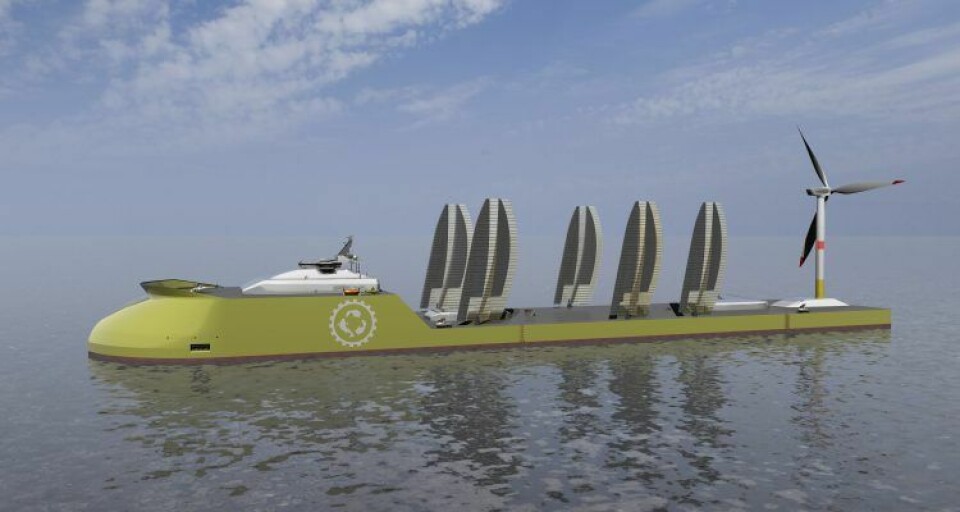
The 50,000 tonne farm
Pure Atlantic has announced its intention to spend NOK 3.3 billion (£31 million) on building a 521 metre vessel which would able to produce 50,000 tonnes of salmon a year.
The company was established three years ago by Tom Henrik Sundby, Svein Johnny Naley, Helge Olav Vikshåland and Kåre Jostein Larsen and has worked on several designs for novel fish production systems, but the latest version – which was sent to the Directorate of Fisheries as part of an application for 46 development licences on October 21 – has been on the drawing board since January 1, 2016.
Their plan is to stock the vessel with 100 gram smolt and grow them to 4.5kg. The production capacity would be 50,000 tons of whole fish per year.
CEO Svein Johnny Naley told kyst.no that the original idea came from co Kåre Jostein Larsen, who has experience of land-based aquaculture in Portugal.
“It all started with that we started looking at existing single hull tankers for conversion. We eventually came to a realization that this was too expensive. The main challenge was supplying enough oxygen-rich water. We already had at that time decided that we would not use conventional cage technology,” says Naley.
They then came with the idea that it might be easier to move the fish tanks through the water as opposed to pump water through the tanks. Based on this philosophy, they went through a variety of methods on how to design the hull and nursery tanks to achieve this.
“Finally, we ended up with a concept where we take in fresh water in the bow of the ship, which is conveyed through a supply channel that runs through the entire length of the ship. Fresh water is then distributed to the culture tanks on the starboard and port side,” he explains.
The water inlet and outlet is 10m below the water surface, both to reduce exposure to lice, and to limit the impact of waves. It will also be possible to adjust the ship's latitude and longitude, meaning it could be moved to an area where the water temperature suited a particular species.
Naley says that several of the company’s employees have worked in the aquaculture industry. The owners have so far spent around NOK 2 million, while the finished ship is calculated to cost around NOK 3.3 billion including feasibility studies and detailed engineering.
“We now need NOK 50 million for engineering and modelling before we can get the project started,” said Naley.
Avoiding coastal congestion
The Pure Atlantic boss believes that there are enough conventional farm sites along the coast of Norway. “The spread of various diseases and parasites are limiting further volume growth in this segment,” he reflects. “And we see two navigable roads for volume growth: number one is closed facilities on sea or land; number two is the we take the fish out of the ocean where they really belong,” he says with a smile.
The company intends to take the ship beyond the 12-mile limit of the Norwegian economic zone, where there are fewer problems with lice and diseases. It will be operated by a crew of 20 on the maritime side, while around 10 more will be needed to look after the fish.






















































